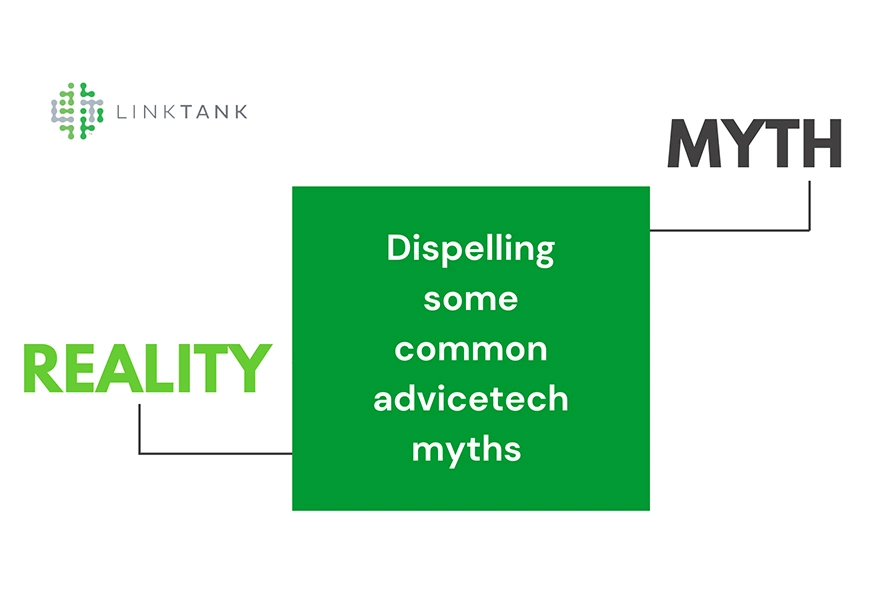
Myth: There is a single “end-to-end” technology solution on the market that serves every need across a financial advisory business
Reality: While many solutions claim to offer comprehensive capabilities, no single software can effectively cover every aspect of financial advisory needs, particularly in multi-disciplinary businesses. Each platform has its strengths, and each user has their own needs and preferences, but every business has a technology ecosystem and integration between these tools and data sources is essential to operational efficiency and data confidence.
Myth: Technology can replace the personal touch in financial advice
Reality: Despite advancements in artificial intelligence and automation, the personal relationship and trust between an advisor and their client remain irreplaceable. Technology can enhance and support this relationship but cannot replicate the human element of empathy and personalised advice.
Myth: Implementing new technology is a one-time effort
Reality: The adoption of new technology is not a one-off project but an ongoing process. Continuous updates, training, and adaptation are necessary to keep up with evolving features, business needs, and regulatory changes. Firms must be prepared for regular investments in both time and resources.
Myth: Technology will immediately increase efficiency and productivity
Reality: While technology has the potential to significantly enhance efficiency, the benefits are seldom immediate. Initial implementation phases can be time-consuming and may temporarily disrupt existing workflows. Proper planning, training, and phased rollouts are essential for realising long-term efficiency gains.
Myth: All young clients are comfortable with digital solutions
Reality: There is a varying degree of tech-savviness among clients, despite age or other demographic segmentation aspects. While some clients may appreciate and adapt quickly to digital solutions, others may prefer traditional methods of communication and advice. Financial advisors need to maintain a balance, offering both digital and traditional options to cater to the diverse preferences of their client base. Choice, rather than automation, is the differentiated service that a forward-thinking advice practice can offer to clients.
Myth: Cost is the only barrier to technology adoption
Reality: While cost is a significant factor, other barriers such as resistance to change, lack of technical expertise, and concerns over data security also play crucial roles in the adoption of new technology. Addressing these challenges requires a comprehensive strategy that includes education, robust security measures, change management processes, and a considerable dose of human empathy.
Myth: Big data will solve all problems in financial advice
Reality: Big data and analytics can provide valuable insights, but they are not a panacea. The quality of data, the ability to interpret it correctly, and the integration of these insights into actionable strategies are critical factors that determine the effectiveness of big data in financial advice.
Myth: Implementing a technology solution into a financial advice business is the vendor’s job
Reality: The technology provider’s area of expertise is typically a ‘technical’ solution-focused one, aimed at successfully getting a firm up and running. This implementation may include things like data migration, interface configuration, user setup, initial training, end-user support, and maybe even some consulting to drive adoption. The ‘business’ implementation is a much bigger and more comprehensive job, which can only be driven from within the financial planning practice as it may span multiple different systems, interfaces, and business processes.
Written by Jen McKay
